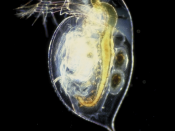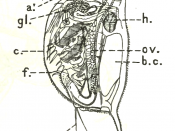Parasite. The word conjures up thoughts of infections and infestations. These nasty critters not only infect humans, but they also infect countless other species. Parasitic protists are the type of organisms that this paper will delve into; more specifically, the phylum Microspora and the hosts that its species infects (Baker, 1982). Many parasitic protists can infect numerous different species of other organisms, but there are some who can only survive and reproduce while they are in one specific species. This concept of a parasitic protist only being able to thrive in a single species or a few select species is referred to as host specificity.
Studying host specificity can lead to gaining invaluable information regarding not only the parasitic species, but also the host species that the parasite infects. By learning as much as we can about parasite-host relationships, we may be able to some day manipulate or control the destructive parasite species such as that of microsporids affecting economic aspects including the Nosema bombycis causing pebrine in the Bombyx mori (silkworm caterpillars) and the Nosema apis causing nosema disease in the Apis mellifera (honey bees).
These two species (B. mori & A. mellifera) alone produce millions of dollars in revenue, but it is not just revenue that one should be concerned with when considering these parasitic microsporidia; we need to be concerned by the delicate balance that the microsporidia and their hosts within our ecosystem are a vital part of. According to Stirnadel and Ebert (1997; as sighted by Canter & Lund, 1951, Green, 1974, Mirscle, 1977, Brambilla, 1983, Brunning, Lingemam & Ringelberg, 1992, Vidtmann, 1993, and Ebert 1995), "micro- and macroparasites, as well as epibionts, have a strong potential to regulate their host populations, to alter the outcome of competition, and possibly to maintain co-existence of natural plankton...


